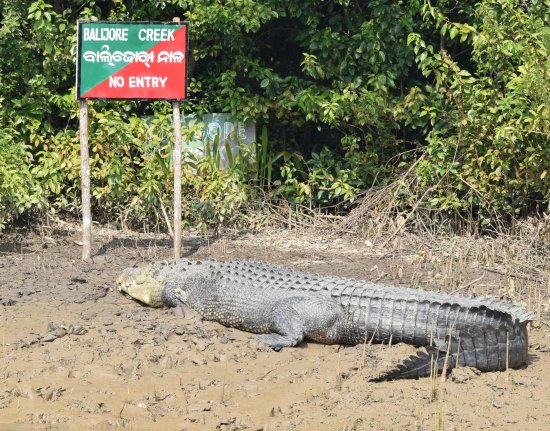
The Bhitarkanika National Park in the Kendrapara district of Odisha will open to tourists next week. The National Park will be open to tourists on August 5, which is great news for wildlife lovers.
Visitors will be allowed to enter the animal sanctuary if they follow the Covid-19 protocols to the letter. Tourists will not be permitted to spend the night at the site, though.
During the mating season of estuarine crocodiles, the wildlife sanctuary was closed for tourists from May 1 to July 31. During this period the state was under lockdown as the second wave of Covid was at its peak.
“All the areas and boats (government and private) in the national park will be sanitized in the next three-four days following which the Bhitarkanika National Park and Gahirmatha Wildlife Sanctuary will be opened for public from August 5. We expect tourists will strictly follow Covid’s appropriate behavior in the park and use masks and sanitizers,” informed Divisional Forest Officer (DFO), Jagayandatta Pati on Sunday.
The park and sanctuary will first be open throughout the day, with the decision on guests staying overnight will be made by the State HQ officials, according to the DFO. According to sources, tourists will be able to visit the national park’s Gupti, Dangamal, and Hukitola areas.
The Ministry of Environment, Forest, and Climate Change (MoEFCC) has recently identified four protected areas (PA) in Odisha where eco-tourism may flourish. Bhitarkanika Wildlife Sanctuary and National Park, Chilika (Nalaban) Wildlife Sanctuary, Gahirmatha (Marine) Wildlife Sanctuary, and Nandankanan Wildlife Sanctuary are among the places to visit.
The Ministry has identified 90 such sites across the country.
The Bhitarkanika National Park is spread in a vast area of 672 Kms. The Wildlife Sanctuary of Odisha is the 2nd largest mangrove ecosystem of India. The Sanctuary’s proximity to the Bay of Bengal makes the soil of the area enriched with salts.
The vegetation and the species of the sanctuary comprise those which are mainly found in the tropical and subtropical intertidal regions. It is the breeding place for the endangered saltwater crocodiles which are the prime attractions of the sanctuary. The Gahirmatha Beach which forms the boundary of the sanctuary in the east is the largest colony of the Olive Ridley Sea Turtles.
The sanctuary has 215 species of birds in which the most important are the eight varieties of kingfisher and the migratory birds from Europe and Central Asia. Apart from this, the sanctuary is the home for many reptiles, mammals, and vertebrates which includes the venomous Cobras and Indian Pythons.
The endangered water monitor lizards, Chitals, Jungle cat, Wild Pigs, Otter, Rhesus Monkeys, Sambar, Spotted Deer, Wild Boar, and the Fishing Cat are also found in the area. The Asian Open Bill, Cormorants, Darters, Black Ibis, Egrets, open billed storks, sandpipers, sea eagles, whistling teals, kites and seagulls are the frequently noticed avians of the sanctuary.



